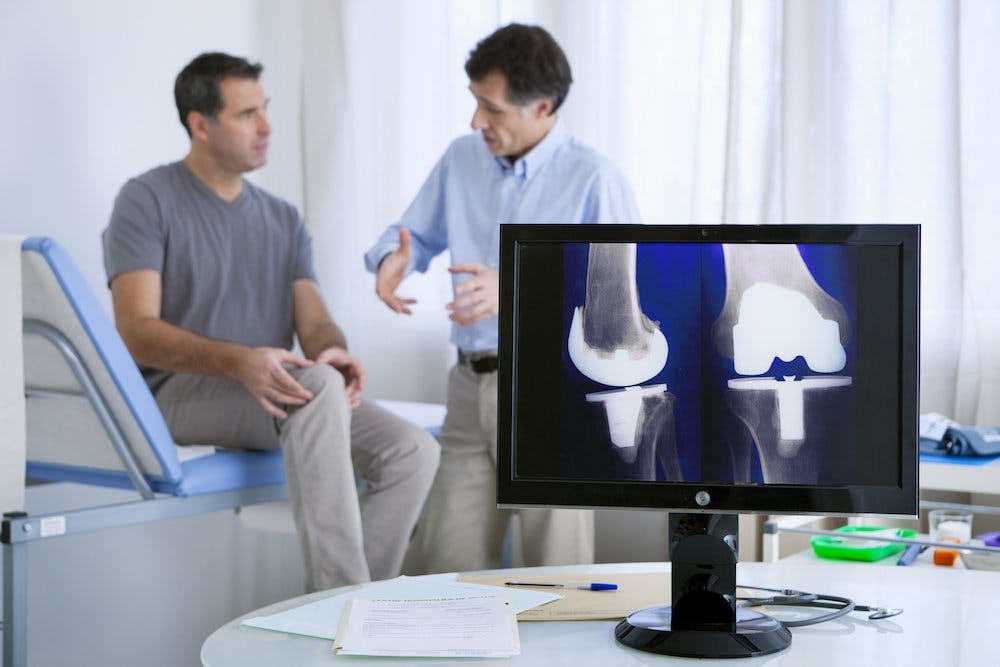
2024-07-12T16:54:51
Sunscreen Travel Tips
- Dermatology
February 11, 2019 | Orthopedics

If you are part of the 30 percent of the population who lives with osteoarthritis of the knee, you know just how debilitating and painful the condition can be. Osteoarthritis is characterized by the wearing away of connective tissue within the joint. The connective tissue, otherwise known as articular cartilage, stops two adjacent bones from scraping against one another. It also allows for a smooth and steady joint movement. When the cartilage begins to wear away, the joint may become inflamed, the movement more strenuous and the knee pain more acute. Partial knee replacement may be able to help.
If you’re like most individuals, the thought of a total knee replacement is a bit frightening. Total knee replacement is often invasive and requires a long recovery process. Not to mention, it can be costly. Advancements in medical imaging and technology have revealed that total knee replacement may not always be necessary. For patients in which the damage is confined to a single compartment, partial knee replacement may suffice.
There are several advantages of partial knee replacement. For one, the surgery requires smaller incisions, which means a shorter recovery time in the hospital. It may also mean that you can return to your everyday activities sooner. Additionally, patients who have had partial knee replacement report less pain than patients who have had a total knee replacement. Surgeons also note that those who undergo partial knee replacement surgery experience less blood loss than those who require a total knee replacement.
Another perk of having your knee only partially replaced is that you get to keep the natural, healthy cartilage, bone and ligaments in the surrounding compartments. This may help your knee feel and move more naturally than if your whole knee was constructed of foreign parts.
The only real disadvantage of a partial knee replacement is that you may require more surgery in the future. This is because there is still a good chance that arthritis will develop in the tissues of the compartments that surgeons did not replace, a risk that disappears with total knee replacement.
The process to complete a partial knee surgery is relatively simple and involves three steps:
Your doctor may send you home within one to three days post-surgery. If your doctor thinks you’re healthy enough, he or she may even allow you to go home that same day. Your healthcare provider may prescribe a pain killer and send you home with a walker, cane or crutches. Once you’re able to walk without assistance, your doctor may give you the green light to start physical therapy.
If you have knee pain due to osteoarthritis, you may be a candidate for partial knee replacement surgery. Talk to your doctor about your options.
“Unicompartmental Knee Replacement.” OrthoInfo. https://orthoinfo.aaos.org/en/treatment/unicompartmental-knee-replacement
“Partial Knee Replacement.” Cleveland Clinic. https://my.clevelandclinic.org/health/treatments/14599–partial-knee-replacement.pdf

WRITTEN BY:
The Live Better Team


2024-07-12T16:54:51

2024-07-02T11:42:04

2024-07-01T13:49:28

2024-06-21T14:29:51
This information is not intended to replace the advice of a medical professional. You should always consult your doctor before making decisions about your health.